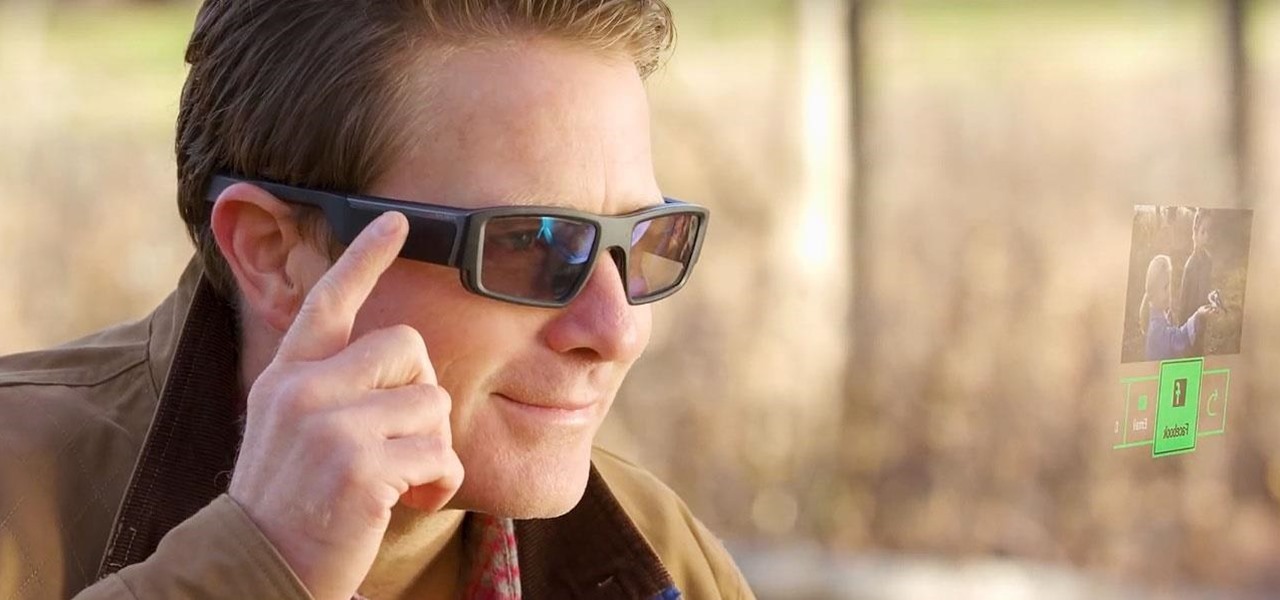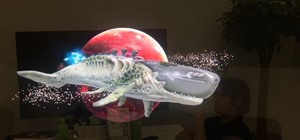Coming into this year's Consumer Electronics Show (CES), the common sentiment among observers was that this was expected to be the big year for augmented reality.
But as the biggest tech conference of the year draws to a close, the reality is that 2018 seems more likely to be the jumping off point for AR being taken seriously by non-techies rather than the true start of AR's move into every consumer's home.
AR for the Masses
In terms of market-ready AR headsets that hit the sweet spot between form, function, and price, the Vuzix Blade with Amazon Alexa integration was closest to the pin. The company's Blade is available for pre-order for $1,997 as a developer kit and is expected to ship this quarter, though the company has told attendees that it plans to bring the price of the device down.
But, if we're being honest, this kind of device is more like a better, less creepy version of Google Glass than the kind of AR smartglasses many are hoping for. Still, it's a start.
We also saw a fashionable design from Rokid, but it isn't clear that this will ever see the light of day. In terms of function, Realmax and Dreamworld offer a bright future in the way of features, but the former is a prototype and the latter not yet available for pre-order.
Predictably, also at CES were a number of headsets that were announced or released last year, like the X1 Smart Glasses from ThirdEye Gen, and the Lenovo Mirage for Star Wars: Jedi Challenges. It was good to see those devices presented at the event, but a bit of a letdown since we were expecting more new looks instead of product promotion retreads.
Perhaps most surprising was the dearth of AR apps at CES. Sure, CES is known for its hardware, but it seems like major missed opportunity to have so many tech-friendly people in one place in the middle of the desert and not deploy a wide range of location-specific AR apps to wow conference attendees.
The fact that there wasn't a major AR app hit that captured the imagination of CES, much like Twitter, Meerkat, and other apps that blew up at South by Southwest in years past, is an indication that the AR app marketplace is still mostly unformed as developers struggle to figure out where the real traction is in terms of AR category hits.
Big Business AR
So far, based on what we've seen this week, the promise for the near future of AR hardware will be driven by the companies making the components rather than those who bring the hardware to market. For companies looking to piece together their own smartglasses or head-mounted displays, Lumus and its optical engine and WaveOptics with its waveguide displays were on hand.
- Don't Miss: Microsoft Gives Us a Peek at the Reality Room Created for Employees to Experiment with AR & VR
For companies looking to skip a few steps, a pair of reference designs offered a market-ready product that can be rebranded for whoever wants to copy it. ASTRI presented its design, powered by a single-chip liquid-crystal-on-silicon display from OmniVision, another potential player among component makers.
Meanwhile, the reference design offering from Flex AR is targeted towards enterprise customers. Flex's experience as a manufacturing partner, particularly with DAQRI, makes it a particularly attractive partner for companies looking to take a shortcut into the headset race.
AR on the Road
If viable consumer AR smartglasses are further down the road, augmented reality dashboards in cars are just a few stops ahead.
The Drive AR platform shown off at CES by Nvidia gives automakers the tools to developer their own AR displays. On the other side of the road, WayRay offers display technology, which can be integrated into windshields by automakers or, eventually, installed as aftermarket dashboard-mounted displays.
What's Cooking in the AR Lab...
On the enterprise side, Dell made its move towards augmented reality for the office, announcing a deal to offer its customers headsets from Meta, a company that was also on hand to show off its work with Ultrahaptics and Zero Light to display AR content with haptic feedback. Also, Lenovo, a name now heavily associated with consumer AR, presented the next iteration of its own smartglasses targeted toward enterprise customers instead of doubling down on its consumer release.
We can expect companies to continue to adopt enterprise solutions, since price per unit is less of a constraint when a viable cost-saving business case can be made. Remember, before the iPhone, it was mostly businesspeople and government officials who carried Blackberry devices. But that changed quickly.
Given that history, we now know that all it takes is "one" mainstream, consumer-friendly AR solution to break things wide open. But until then, what CES taught us this week is that big business will likely drive the AR story in terms of significant advances in the technology for at least the next couple of quarters.
Nevertheless, years from now, we may look back at CES 2018 as the catalyst for the age of the consumer AR headset/smartglasses, and the precursor to the true AR explosion that we can all see coming right around the virtual corner.
Additional reporting by Adario Strange
Just updated your iPhone? You'll find new features for Podcasts, News, Books, and TV, as well as important security improvements and fresh wallpapers. Find out what's new and changed on your iPhone with the iOS 17.5 update.
























Be the First to Comment
Share Your Thoughts